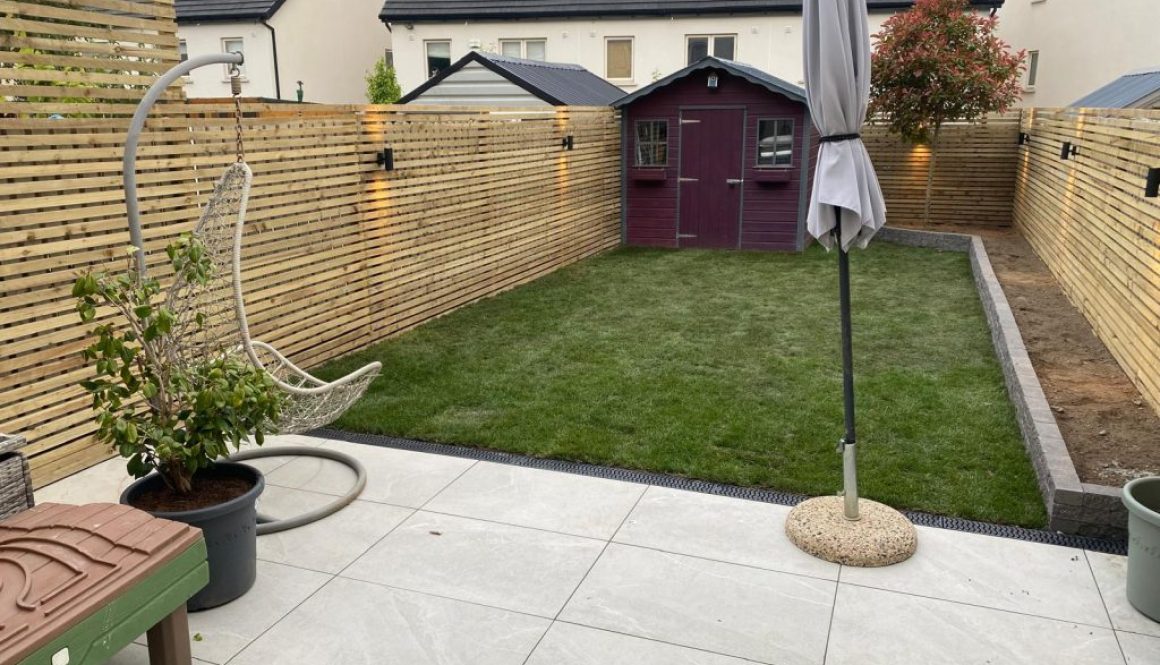Incorporating Flower Beds and Walls into Your Landscape Design
Good landscape design isn’t just about the lawn or patio—it’s about structure, flow, and creating outdoor spaces that are both useful and beautiful. One of the most effective ways to add depth and character to your garden is by combining flower beds with low walls.
Whether you live in a suburban semi in Dublin or a period home with a courtyard garden, integrating raised beds and retaining walls can completely transform your outdoor space.
Why Add Flower Beds and Walls?
Done right, walls and beds aren’t just decorative—they improve function and make gardens easier to manage. Here’s what they bring to the table:
1. Defined Structure
Walls and raised beds create clear boundaries in your garden, guiding the eye and breaking up large areas. This gives a sense of purpose and flow.
2. Improved Planting Conditions
Raised beds allow for better drainage, improved soil control, and easier planting. They’re ideal for homes with poor or compacted soil.
3. Low Maintenance
Add a border of perennials or shrubs and you’ll reduce lawn size and maintenance effort. Raised beds are easier to weed and water, too.
4. Visual Interest
Layering your garden with different heights adds depth and movement. Wall and bed combos draw attention to focal points or architectural features.
5. Retaining Support
In sloped gardens, retaining walls are essential for stability, preventing erosion and creating usable levels.
Good Read: From Drab to Dreamy: Real Garden Makeover Ideas for Dublin Homes
Best Materials for Garden Walls
The right material makes a big difference—not just in durability, but in how well the wall fits your home and landscape.
1. Natural Stone
A timeless option. Works well in Dublin’s older homes and gardens with a rustic feel. Choose limestone, sandstone, or granite for strength and texture.
- Blends seamlessly with planting
- Ages naturally
- High-end finish
2. Brick
Classic and versatile. Perfect for urban or period properties where red or clay bricks are already part of the design.
- Great for edging or short retaining walls
- Easy to match with house exterior
- Long-lasting with proper pointing
3. Concrete Blocks (with or without Render)
Budget-friendly and customisable. Can be painted, rendered, or clad in stone for a clean modern finish.
- Strong and reliable
- Flexible design options
- Needs finishing to enhance appearance
4. Railway Sleepers or Timber
Ideal for beds rather than structural walls. Great for quick builds and softer designs.
- Natural look
- Easy to install
- Shorter lifespan unless treated
Design Ideas for Dublin Homes
Every garden has its own style and challenges. Here’s how flower beds and walls can work in different spaces:
1. Small Urban Gardens
Use a short retaining wall to create a raised bed along the boundary. Fill with compact evergreens, lavender, or ornamental grasses. This softens walls and fences while keeping space open.
Tip: Use light-coloured stone or render to make the space feel larger.
2. Sloped Gardens
Terrace the slope using retaining walls to create usable flat areas. Each level can be planted differently—for colour, privacy, or seasonal interest.
Tip: Include steps or curved pathways to link levels and invite movement.
3. Period Properties
Go for natural stone or reclaimed brick with traditional planting: hydrangeas, box hedging, and climbers like clematis or roses.
Tip: Echo architectural features of the house in the garden walls for cohesion.
4. Modern Builds
Use sharp lines and rendered walls paired with minimal planting—think grasses, bamboo, or sculpted shrubs. Keep it tidy and geometric.
Tip: LED wall lights can add a sleek finish for evenings.
Flower Bed Planning Tips
A wall is only half the story. The planting makes the design come alive. Here’s how to plan a bed that looks good all year:
1. Layer the Planting
- Back row: shrubs or tall perennials (hydrangeas, grasses, holly)
- Middle: flowering perennials (geranium, salvia, rudbeckia)
- Front: low-growers and ground covers (thyme, heuchera, sedum)
2. Think in Seasons
Plan for spring bulbs, summer colour, autumn foliage, and winter structure. That way, your garden always has something to offer.
3. Keep It Manageable
Choose hardy plants that don’t need constant deadheading or watering. Mulch the soil to hold in moisture and block weeds.
4. Match Sun to Plant
South-facing beds need sun lovers like lavender, rosemary, or echinacea. Shady spots suit hostas, ferns, and astilbes.
Practical Considerations
Before you start digging or laying blocks, think through these key points:
Drainage
Make sure raised beds and walls don’t trap water. Use drainage holes or gravel layers at the base to keep roots healthy and avoid wall damage.
Foundations
Even low walls need proper footings. For retaining walls over 600mm, a reinforced base is essential for long-term stability.
Access
Keep beds narrow enough that you can reach the back without stepping in them — especially important for older homeowners or those with mobility concerns.
Maintenance
Rendered or painted walls may need refreshing every few years. Stone and brick generally weather well with minimal upkeep.
Good Read: Spring Ready: Why April Is the Perfect Time to Transform Your Garden
Combining with Other Features
Flower beds and walls work even better when combined with other landscape elements:
- Paving: Raised beds alongside patios create an outdoor room feel.
- Lighting: Uplights or wall washers highlight textures and planting at night.
- Water Features: Add a small pond or fountain for movement and sound.
- Seating: Incorporate built-in benches along walls or the edges of beds.
This integrated approach makes the garden feel intentional and well-planned.
Budget Guide
Here’s a rough breakdown of what to expect:
Feature | Approximate Cost (Installed) |
Natural stone wall | €150–€250 per metre |
Brick wall | €120–€180 per metre |
Rendered concrete block wall | €100–€160 per metre |
Raised timber bed | €80–€120 per metre |
Soil and planting | €50–€100 per bed metre |
Prices will vary depending on site access, size, and materials. Complex builds or sloped gardens may add to the cost but also the value. For concrete costs, ask the team of Rock Paving and Landscaping.
Structure, Style, and Colour—All in One Smart Garden Upgrade
Flower beds and low walls do more than just make your garden look good—they give it shape, purpose, and a sense of order. Whether you’re working with a tight urban courtyard or a large, sloped garden in the suburbs, combining hard landscaping with thoughtful planting is one of the smartest ways to improve your outdoor space.
From natural stone and brick walls to raised beds full of seasonal colour, you can design a garden that’s easy to manage and enjoyable all year round. It’s a practical upgrade that adds lasting value, beauty, and function.
Ready to bring structure and colour to your garden? Contact Rock Road Paving for expert wall and bed design that adds real value to your outdoor space.



